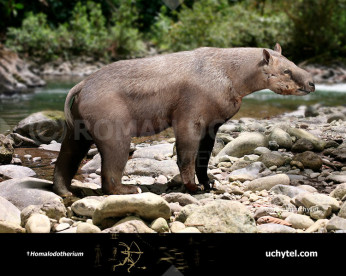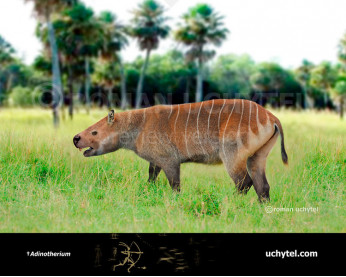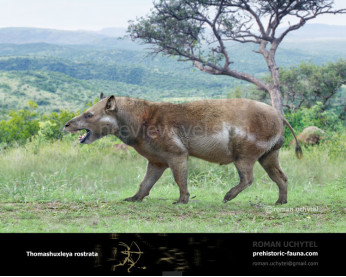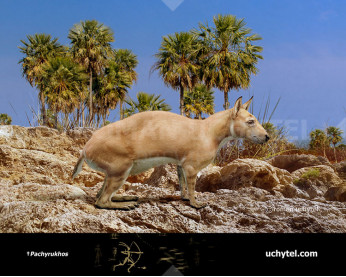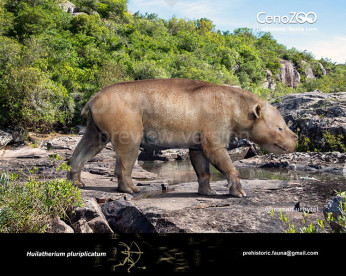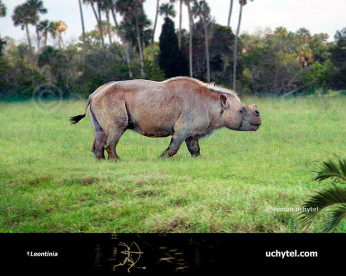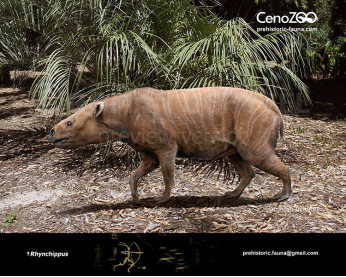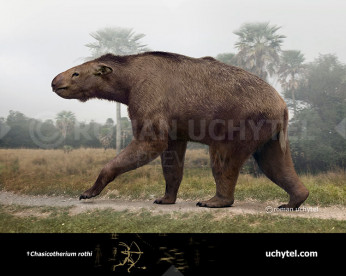Periphragnis
2024520245Periphragnis (†Periphragnis (Roth 1899))
Order: †Notoungulata
Family: †Isotemnidae
Temporal range: during the Middle Eocene-Early Oligocene (South America, ~48–29 Ma)
Dimensions: length - 1,5 m, height ~75 сm, weight ~60-150 kg
Typical representative: †Periphragnis harmeri
Periphragnis was of robust build, with powerful, probably digitigrade legs ending in hooves. The forelegs, particularly robust, shared similarities with those of its relative Thomashuxleya, but had less flattened ungulate phalanges. Periphragnis was approximately one meter and a half long, around the size of a modern boar. The canines were large-sized.
The genus Periphragnis was first described in 1899 by Santiago Roth, based on fossils found around Lago Musters, in Argentina, in terrains dated from the Middle Eocence.
Periphragnis has historically been considered a rather derived member of the Isotemnidae, a group of archaic notoungulates with a massive build. Recently, the status of Isotemnidae as a monophyletic group has been discussed, and Periphragnis is considered a basal toxodont along with Thomashuxleya.
Like several other isotemnids, Periphragnis fed on roots and tubers he dug up with his powerful legs and minced with his strong front teeth. The characteristics of the molars and incisors indicate that this animal may have been a grazer.
Periphragnis (†Periphragnis (Roth 1899))
Order: †Notoungulata
Family: †Isotemnidae
Temporal range: during the Middle Eocene-Early Oligocene (South America, ~48–29 Ma)
Dimensions: length - 1,5 m, height ~75 сm, weight ~60-150 kg
Typical representative: †Periphragnis harmeri
Periphragnis was of robust build, with powerful, probably digitigrade legs ending in hooves. The forelegs, particularly robust, shared similarities with those of its relative Thomashuxleya, but had less flattened ungulate phalanges. Periphragnis was approximately one meter and a half long, around the size of a modern boar. The canines were large-sized.
The genus Periphragnis was first described in 1899 by Santiago Roth, based on fossils found around Lago Musters, in Argentina, in terrains dated from the Middle Eocence.
Periphragnis has historically been considered a rather derived member of the Isotemnidae, a group of archaic notoungulates with a massive build. Recently, the status of Isotemnidae as a monophyletic group has been discussed, and Periphragnis is considered a basal toxodont along with Thomashuxleya.
Like several other isotemnids, Periphragnis fed on roots and tubers he dug up with his powerful legs and minced with his strong front teeth. The characteristics of the molars and incisors indicate that this animal may have been a grazer.

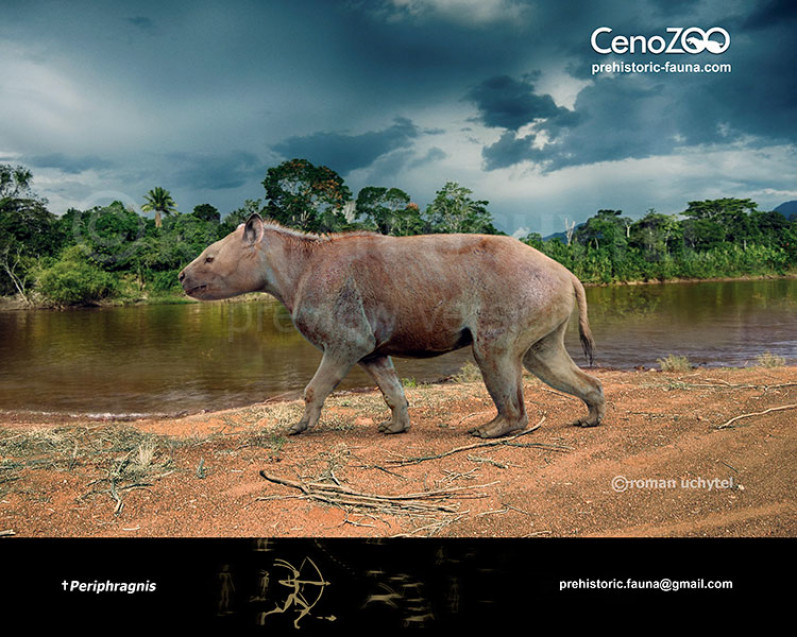
-797x638.jpg)


-70x56.jpg)

